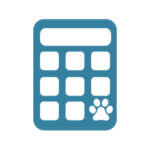Blog: How to Sell Books on Amazon: Tips and Tricks From a 3-Year Internet Bookseller
How to Sell Books on Amazon: Tips and Tricks From a 3-Year Internet Bookseller
Today, I’m going to teach you how to sell books on Amazon. Frankly, it’s one of the best ways to start out selling stuff online.
And I’ll give you three reasons in just a moment.
First, there’s something important you need to know:
Ebay, as a place to sell stuff, sucks.
Okay, maybe I’m being unfair.
After all, there’s plenty of successful Ebay sellers out there.
Hell, I’ve read #girlboss, and Sophia A is a total inspiration.
But, after reading my story, I think you’ll understand why that’s it’s way easier to sell stuff on Amazon than Ebay, and how selling books on Amazon is a great way to get started without spending thousands on inventory, plus it’s a perfect way to raise funds to start your private label Amazon business.
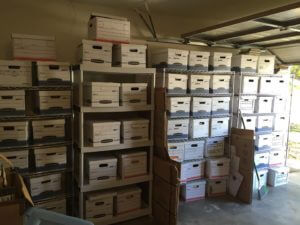
My book inventory when I still sold FBM.
How to Sell Books on Amazon: Part 1
3 Reasons Why Selling Books on Amazon is a Great Way to Start
Long before I made six-figures selling my own branded products on Amazon, I was a book seller. My method was a little different than many booksellers, but it definitely helped prime me for bigger and better things on the platform.
A little background first.
How I became a bookseller.
I hated my 9-5 job. Hated it.
Back in 2015 I was selling cars. And yep… all the bad stuff you hear about car salesmen is 100% true.
After three years of it, I’d had enough.
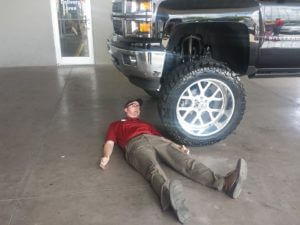
My life as a car salesmen–I just wanted it to end!
So, I started looking for a way out. I always wanted to be an entrepreneur, I just didn’t know where to begin.
And like many, I was scared to make a move.
But then I read about passive income. That’s how I discovered book selling.
I didn’t have a lot of money to start with either. Just a few hundred bucks. And frankly, I didn’t even want to risk that.
Fortunately, I had an old comic book collection I’d been meaning to sell off. Without any better idea of what to do (back then, I had no idea how to sell books on Amazon), I turned to one of the most popular peer-to-peer sales platform on the web:
Ebay.
Thus, I made some great auction pages and listed my comics. Then, I just sat and waited…
… and waited…
… and waited.
A week passed and my auctions ended.
Zero sales.
And here’s why…
Reason #1 Amazon is a Great Place to Sell Books: Shared Listings
When you sell a product on Ebay, it’s you AND your listing that’s competing. And even if you’re the cheapest or best entry, you might not appear on the first page of search results (not unless the shopper uses the filters, of course). And despite the fact that my comic books were priced aggressively, the listings whose sellers had been selling on Ebay longer (sometimes for a decade or more) were given precedence.
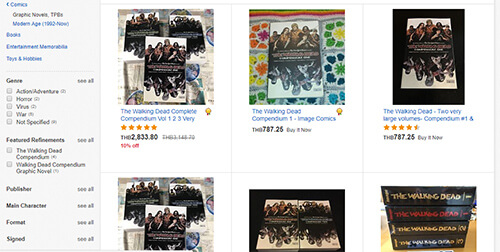
Ebay lists individually by seller, not item. Weirdos.
Not exactly newbie friendly, was it?
However, Amazon’s a totally different story.
When you list a product on Amazon, it goes under the master listing. From there, entries are organized by condition and price. Furthermore, if you’re the lowest priced listing (and your seller rating isn’t too out-of-whack) you’ll grab the coveted BUY BOX.
This makes your entry the one shoppers buy when they click the big, orange “Add-to-Cart” button.
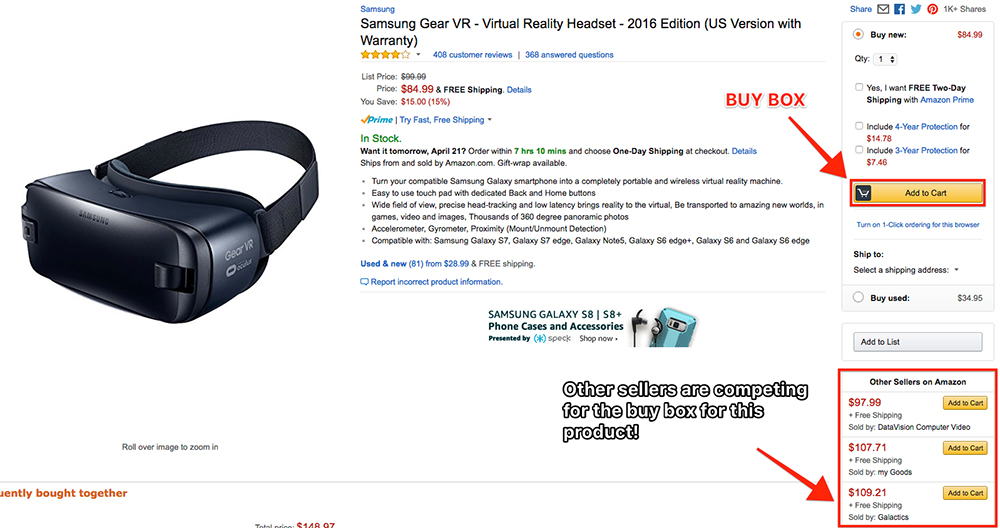
How to Sell Books on Amazon Tip #1
Price your product the lowest on a listing and you’ll earn the BUY BOX, which increases the chances of your product selling tenfold.
Switching over to Amazon.
Ebay? Sucks. (I already covered that)
But I didn’t want to give up selling stuff online.
Thus, I turned to Amazon.
Back then, I had no idea that Amazon selling was a thing. I thought, like I’m sure many do, that nearly everything sold on Amazon was sold by Amazon themselves. Nowadays I know better–in fact, I’m willing to bet that more than half of what’s sold on Amazon is by third-party sellers.
Of course, I didn’t really know how to sell books on Amazon. For example, there’s three ways a third-party seller can sell on Amazon.
Three ways to sell your own products on Amazon:
- Fulfilled-by-merchant (FBM). This is when you create a listing on Amazon, but ship the product yourself. This is good for sellers who’ve already got a pretty solid fulfillment network in place.
- Amazon vendors (AMZ). This is when you sell your inventory directly to Amazon through their vendor central services. This is good for enterprise sellers who need to unload a crapload of inventory fast.
- Fulfilled-by-Amazon (FBA). This is when you create a listing on Amazon, but let Amazon do the storing and shipping on your behalf. As a bonus, your products sell Prime. This is probably the most popular way how to sell on Amazon for beginners.
I started off with fulfilled-by-merchant (FBM). I’d store, pack, and ship my own books as they sold.
24 hours later…
I remember exactly where I was when I got my first Amazon sale.
It was about 4:00pm on Thursday, April 23rd, 2015. It was my copy of The Walking Dead Compendium Vol. 1. I had the Amazon seller app, so the moment it sold I got a notification on my cell phone.
And then, just a few hours later I sold another book. Two in one day!
Did I mention that Ebay sucks?
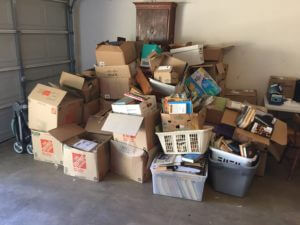
A pile of books waiting for me to list them on Amazon.
Dave the book-listing machine.
With proof-of-concept in place, I started going buck wild. I quickly learned more about how to sell books on Amazon. One of the most important things I learned about how to sell books on Amazon was its best-seller-ranking system (BSR).

Reason #2 Amazon is a Great Place to Sell Books: Best-Seller Rankings (BSR)
Each and every product that’s sold at least one unit on Amazon is awarded a BSR. The lower the BSR, the more sales the product makes.
So, for example, if a book has a BSR of 30,000, that means it’s likely to sell the same day you list it. But if it has a BSR of 2,500,000, it could take 60 days or more to sell the book.
How to Sell Books on Amazon Tip #2
Best-Seller Ranking (BSRs) are your guide to whether a not a book is worth listing. Lower is better. When I sold books, I rarely listed books that had a BSR higher than 200,000.
I would type all of my books’ ISBNs (little codes books are given to keep them organized) manually into Amazon. Then, I’d cross reference the book’s BSR.
If it was lower than 200k, I listed it.
If it was higher than 200k, I put it in the “donation” pile.
Were I to list books on Ebay, the only way I’d know whether or not a book sold well was by checking “recently sold” items and then checking the distances between dates. That’s pretty time consuming!
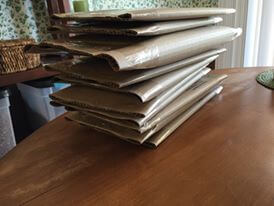
Books ready to ship!
Growing my book empire.
Months passed. I was selling roughly 10 books per day and making decent profit, too (although, I probably could have done better had I been using a certain profit-tracking tool… more on that in a moment). However, the big problem I was running into was that packaging and shipping books myself was taking up a ton of my time.
That’s when I discovered FBA.
Well, FBA had been there for a while. But for whatever reason I never really looked into it.
But then I felt like a dummy for not checking it out sooner.

One of Amazon’s massive fulfillment centers.
Reason #3 Amazon is a Great Place to Sell Books: Fulfilled-by-Amazon (FBA)
Fulfilled-by-Amazon (FBA) is a program that Amazon offers its sellers which allows them to ship their inventory directly to one of their giant, million-acre fulfillment centers (FC). From there, Amazon stores your products/books for you. When a sale goes through, they pick, pack, and ship your product. Plus, they deal with customer service issues like returns, complaints, etc. on your behalf.
Game changer.
Now, instead of spending 3-4 hours every night packing books and another 30 minutes waiting in line at the post office, all I had to do was pack up my used books and send them straight to Amazon. They did everything else!
Plus, my books were now going out PRIME, which meant conversions shot through the roof.
How to Sell Books on Amazon Tip #2
Unless you’ve got a distribution channel already in place, use Amazon FBA. It helps you sell your books a lot faster and does all the work for you. All you have to do is find the inventory.
Now that I didn’t have to worry about storing so many books, I could up my BSR cutoff, too. After all, Amazon would be storing them. And so long as they didn’t hang out in the FCs too long, I’d avoid most late fees. So now I went from under 250,000 BSR to 1,000,000.
. . .
How to Sell Books on Amazon: Part 2
Finding Books to Sell on Amazon
Amazon bookselling is its own world, and within that world there’s lots of different methods of doing it. These methods stand out from each other not-so-much by the way they sell or distribute their products, but more how they find their inventory.
Here’s three different ways to find books to sell on Amazon:
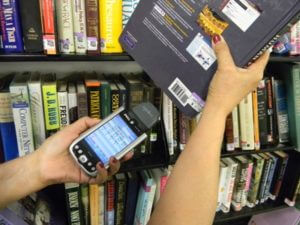
Book Finding Method #1 – Scanning
Of all the ways how to sell books on Amazon, this is probably the most popular method. You’ve probably seen these people at book sales, library sales, and even used book stores digging through piles of dusty tomes like zombies.
Basically, those that use the scanning method go to sales where books are priced dirt cheap (usually under $1.00) and scan each and every bar code with their cell phone or portable scanner. An app on their phone cross reference’s the book’s BSR as well as the book’s lowest sales price and lets the seller know whether or not the book is worth purchasing. Typically, a Scanner will carry a box, shopping cart, or many reusable shopping bags to lug their goods around.
This method is very similar to retail arbitrage.

Book Finding Method #2 – Wholesaling
This was the primary method that I used to find books.
Instead of scanning each and every book at a book sale, I’d just make offers on the entire lot. This worked especially well at yard sales, estate sales, and even book store closings. By being indiscriminate, it meant that I could get the price per book way down (usually less than $0.25 per book), but also meant that I was left with a lot of duds. With good purchases, I’d usually have 3 “donate” books for every 1 book I listed. So, effectively, my inventory cost $1.00 per item.
How to Sell Books on Amazon Tip #4
The best time to make an offer an a large lot of books is at the end of the sale. Most people HATE dealing with books, and will sell them off for pretty cheap. I’ve often bought 200+ books in one shot for only $20 just because the sellers didn’t want to deal with them.
And a lot of times you can get them for FREE, too!

Book Finding Method #3 – Online Arbitrage (OA)
The other way I found books was through online arbitrage.
Online arbitrage is a method of buying a book on one marketplace (such as Ebay or Craiglist) to resell on another. Since it’s a little more time consuming than scanning or wholesaling, it’s best to target books that sell for $25 or more. Textbooks and first edition books are especially great targets.
How to Sell Books on Amazon Tip #5
College kids are terrible planners and tend to buy their textbooks at the last minute. For this reason, they’ll usually pay 20%+ more to have a book ship 2-3 days Prime versus waiting 10+ days for media mail. So that means you can buy books which are FBM (and tend to ship media mail) and turn around and resell them Prime at a higher price. I kept a list of 10-20 textbooks I could do this with. The returns are better than the stock market!
. . .
How to Sell Books on Amazon: Part 3
8 Simple Steps to Starting an Amazon Book Selling Business
Now you understand some of the basics of how to sell books on Amazon. Here’s a pretty simple how-to on selling books that’ll hopefully get you started.
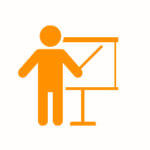
Step 1. Pick your sourcing method.
Of the methods listed above, pick which one best fits you and your personality. Are you the kind of person who likes the thrill of a treasure hunt? Then become a Scanner. Or are you a deal maker? Then go for wholesaling! Finally, you might just be happy with flipping the same 10 textbooks over and over again. That means OA is for you.
(If you’re going to sell books with a scanner, make sure you get a good scanning app that can scan books with a push of a button.)

Step 2. Find your inventory.
If you’re going to scan or do wholesale, start looking around for book sales. Check with your local library and used book stores when they plan on putting a sale on. Hop on Craig’s List and Facebook Marketplace to see when there’s a yard sale or estate sale with a lot of books. You might even find someone selling their own collection.
How to Sell Books on Amazon Tip #6
If you don’t want to or can’t spend money to start, just look around your house for some old books to list. That’s what I did, listing my comic books. I was surprised to discover how valuable some of the old titles were.
For online arbitrage, start looking at textbooks, especially textbooks that are one or two editions behind (students love buying those, because they’re cheaper for them; and for you, the variance between FBM and FBA is often much higher).
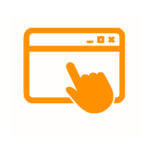
Step 3. Create an Amazon seller account.
To sell on Amazon, you’ll need an Amazon seller account. There’s two types of accounts you can start: individual and professional. Individual is free, but you pay an extra $1.00 per sale. Meanwhile, professional costs $39.95 per month, but doesn’t have the $1.00 extra fee. So basically, if you think you’re going to sell more than 40 units per month (to put it in perspective, I sold 300 books per month when I started) get the professional selling plan.
How to Sell Books on Amazon Tip #7
If you’re going to sell more than 40 units per month (pretty easy to do with books), then get the professional selling plan. It’s a $39.95 subscription fee, but you avoid the $1.00 fee tacked on to every sale made as an individual seller.
Step 4. Use Fetcher to track costs and profits.
When you’re dealing with hundreds of titles, it’s pretty easy to lose track of what costs what.
I was no better when I started. I’d pay $500 for 500 books one day, then $80 for 2,000 the next. Plus, I’d have a few textbooks I bought for $30 or more thrown in.
It was a total mess!
So when I made sales I had no idea whether or not I was actually profiting.
Fortunately, I discovered Fetcher.
Fetcher is a app that integrates directly into your Amazon seller account that helps you track your profits. You can easily input the costs of each of your products, too, something that you can’t do with Amazon seller central.
Plus, Fetcher comes with a few more goodies:
- Product breakdown on a per ASIN basis
- Pay Per Click cost and sales analysis
- Product promotion tracking and real costs
- Amazon fees – storage, FBA and everything else
- Refund tracking with comparisons and costs
- Costs of Goods Sold tracking and calculations
- Inventory dashboard
- Professional Profit and Loss Statement
- Daily sales and profit email
So what does Fetcher cost?
Since I’ve been using Fetcher, I’ve found myself making 38% more profits than I used to. It’s far easier to know whether or not a book is worth listing if you’re tracking your cost-of-goods. Plus, the easy-to use interface makes it my go-to option over Seller Central (which I hardly check anymore).
One could easily price an app like this at $97 per month.
Or even half that.
Fetcher is only $29 $19 per month to get started.
Fetcher‘s people are so confident in its abilities to accurately track your Amazon profits, they’ll even let you try it FREE for 31-days.
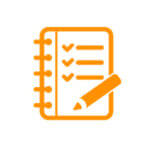
Step 5. List your inventory on Amazon.
Next, you’ll need to list your inventory on Amazon. There’s ways to automatically scan your inventory in, but if you’re like me, I used to do each and every book by hand typing in the ISBN into Amazon’s search bar and clicking “I have one to sell.” That way I could check the condition, too.
Because once you’ve found your book’s listing, you’ll need to place it under the correct condition.
There are, more or less, 5 conditions which you can list books on Amazon:
New
Just like it sounds. A brand-new, unused, unopened item in its original packaging, with all original packaging materials included. Original protective wrapping, if any, is intact. Original manufacturer’s warranty, if any, still applies, with warranty details included in the listing comments.
Used – Like New
An apparently untouched item in perfect condition. Original protective wrapping may be missing, but the original packaging is intact and pristine. There are absolutely no signs of wear on the item or its packaging. Instructions are included. Item is suitable for presenting as a gift.
(Note: the difference between Like New and New is often so negligible, you might as well just list the book as New for the higher price point (and Buy Box).
Used – Very Good
A well-cared-for item that has seen limited use but remains in great condition. The item is complete, unmarked, and undamaged, but may show some limited signs of wear. Item works perfectly.
(Note: if the book looks used and it has absolutely no writing in it–I repeat, IT HAS ABSOLUTELY NO WRITING IN IT–then I list it as Very Good. But if you try to list a book with writing in it or a missing dust jacket, you’ll get called out by the book nerds and get bad seller feedback.)
Used – Good
Use only if noted in the Category-Specific Condition Guidelines. The item shows wear from consistent use, but it remains in good condition and works perfectly. It may be marked, have identifying markings on it, or show other signs of previous use.
(Note: Usually, this is as low as I’ll go with a book in terms of quality.)
Used – Acceptable
Use only if noted in the Category-Specific Condition Guidelines. The item is fairly worn but continues to work perfectly. Signs of wear can include aesthetic issues such as scratches, dents, and worn corners. The item may have identifying markings on it or show other signs of previous use.
(Note: this is for books that are BEAT TO HELL. I only ever sell this condition if I somehow got the book for cheap and it’s worth a ton and has a super low BSR. Many book buyers on Amazon–myself included–will totally avoid this condition.)
Make sure you know your book conditions up-down-left-right. People who buy a lot of used books, myself included, are very sensitive about conditions. If I buy a book that’s Very Good condition and see that it has writing in it, I’m going to contact you. And 9 times out of 10, you’re probably going to just refund the full amount to avoid getting bad seller feedback (plus it’s often more costly to accept a return than to refund it).
How to Sell Books on Amazon Tip #8
Different conditions come with different price points. Often, the lowest Very Good price will be a lot higher than the lowest Good or Acceptable condition. However, if it’s a slow seller (BSR 250,000 or higher), then you might consider just pricing it to match the Good or Acceptable condition.

Step 6. Ship the books to the nearest fulfillment center.
If you’re selling books FBA (I recommend that you do), you’ll need to send them to the nearest fulfillment center (or centers). It’s pretty easy to do. Just throw them in a box (I like Home Depot’s Small Moving Boxes because they’re pretty cheap), and ship via one of Amazon’s preferred carriers. Don’t forget to mark the shipping costs in your Fetcher back screen!

Step 7. Watch as sales come in and track profits on Fetcher.
Once your books hit the fulfillment centers and so long as you priced them right and only picked books with low BSRs, you should start seeing sales right away. To see how much you’re profiting, be sure to log in to Fetcher and check your daily stats.
How to Sell Books on Amazon Tip #9
When you’re just starting out, try not to take too much money out of your funds. Save the money that you’re making to purchase new inventory. The more you can grow your business, the easier it is for you to push into even more profitable Amazon selling methods such as private label and wholesaling.

Step 8. Provide good customer service.
Fortunately, selling used books you won’t have to worry too much about product reviews (since you didn’t write the book). All you have to do is make sure that your customers are happy.
A great way to keep up with your customers is through using an automated email service like Jump Send that will follow up with them and see if everything went okay with your order.
It’s pretty rare that you’ll get bad seller feedback from a book buyer, and if you did, it’s often because you listed a book improperly (I repeat: do not list books in the wrong condition… it’ll kill your seller feedback rating!)
Conclusion
Hopefully, this guide has taught you the basics of how to sell books on Amazon. I sold books on Amazon for about nine months before I switched over to private label full time. But every now and then, I still like to find a few books to list using my old online arbitrage methods.
After all, when I was making $2000-$3000 per month selling books, I suddenly had enough money to start creating my own brands.
But that’s a story for another time… 😉

